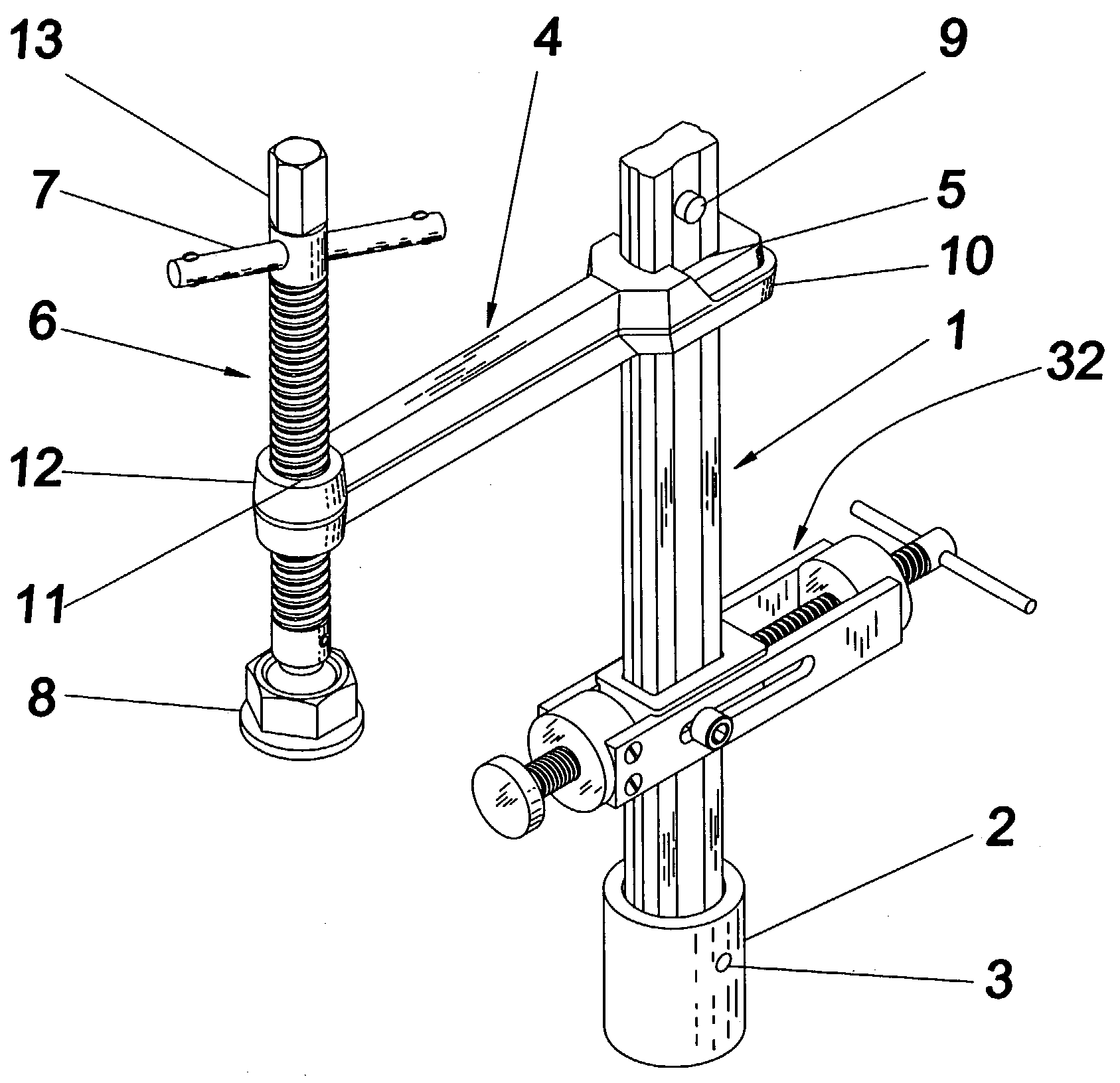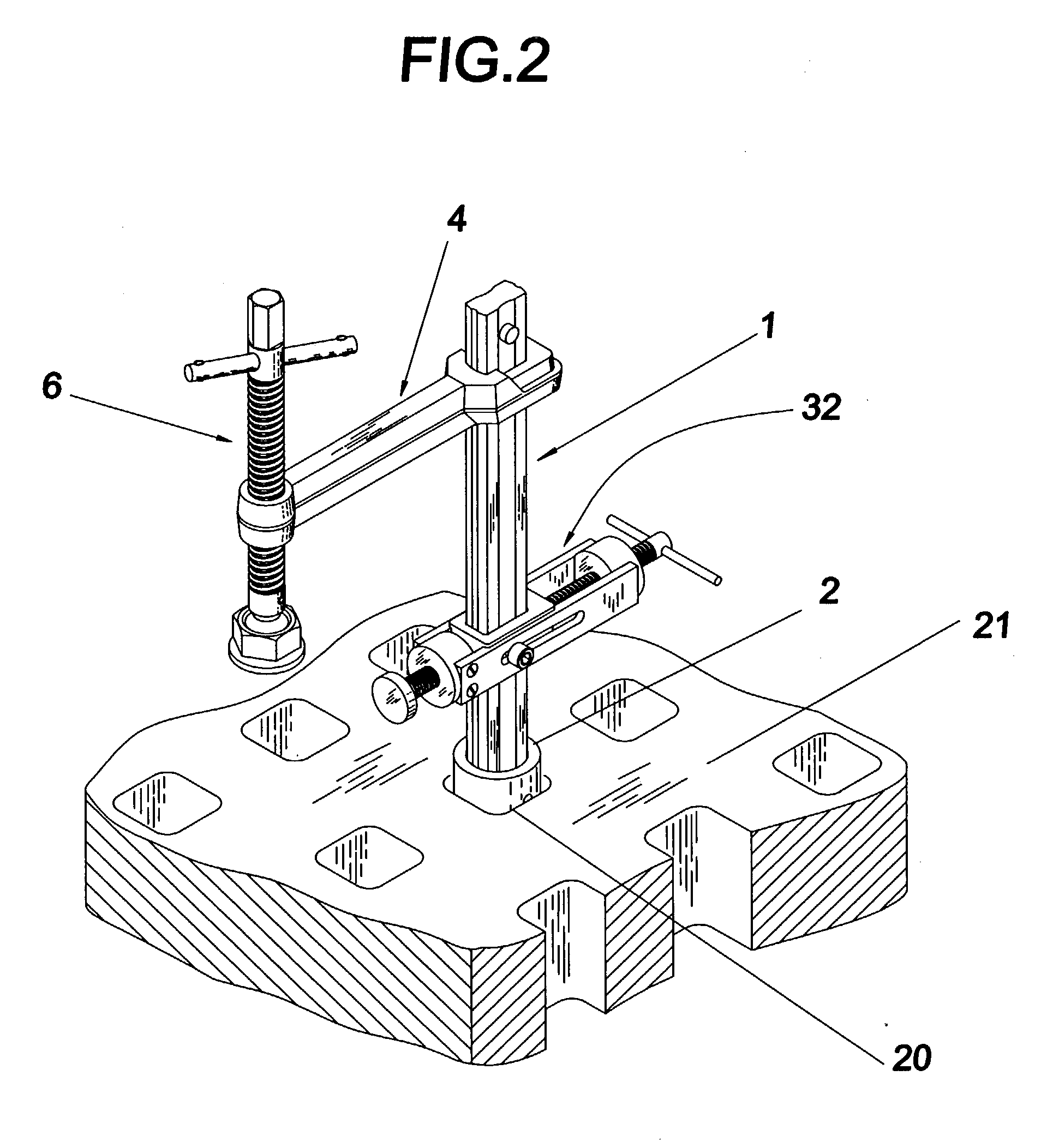Inserta clamp
- Summary
- Abstract
- Description
- Claims
- Application Information
AI Technical Summary
Benefits of technology
Problems solved by technology
Method used
Image
Examples
Embodiment Construction
[0017] With the help of the drawings and the detail description below, the features of the present invention will be apparent and fully understandable.
[0018] Referring to FIG. 1, the present invention, inserta clamp comprises a straight shank 1, a short cylindrical sleeve 2 attached and fixed to the lower end of shank 1 by taper pin 3, and a movable arm 4 with one end slid over the top end of shank 1 through rectangular hole 5 and the other end fitted with a threaded rod 6, turning handle 7 and the clamping pad 8. The straight shank 1 acts as the fixed arm of a conventional clamp. At the upper end of shank 1, a spring loaded quick release button 9 is equipped to prevent the falling off of the movable arm 4 and other attachments from shank 1, but at the same time it allows quick and easy insertion of these items onto shank 1. Movable arm 4 is a metal bar with a rectangular hole 5 at one end 10 and a cylindrical threaded hole 11 at the other end 12. The upper end of shank 1 is insert...
PUM
| Property | Measurement | Unit |
|---|---|---|
| Diameter | aaaaa | aaaaa |
| Size | aaaaa | aaaaa |
Abstract
Description
Claims
Application Information
 Login to View More
Login to View More - R&D
- Intellectual Property
- Life Sciences
- Materials
- Tech Scout
- Unparalleled Data Quality
- Higher Quality Content
- 60% Fewer Hallucinations
Browse by: Latest US Patents, China's latest patents, Technical Efficacy Thesaurus, Application Domain, Technology Topic, Popular Technical Reports.
© 2025 PatSnap. All rights reserved.Legal|Privacy policy|Modern Slavery Act Transparency Statement|Sitemap|About US| Contact US: help@patsnap.com



